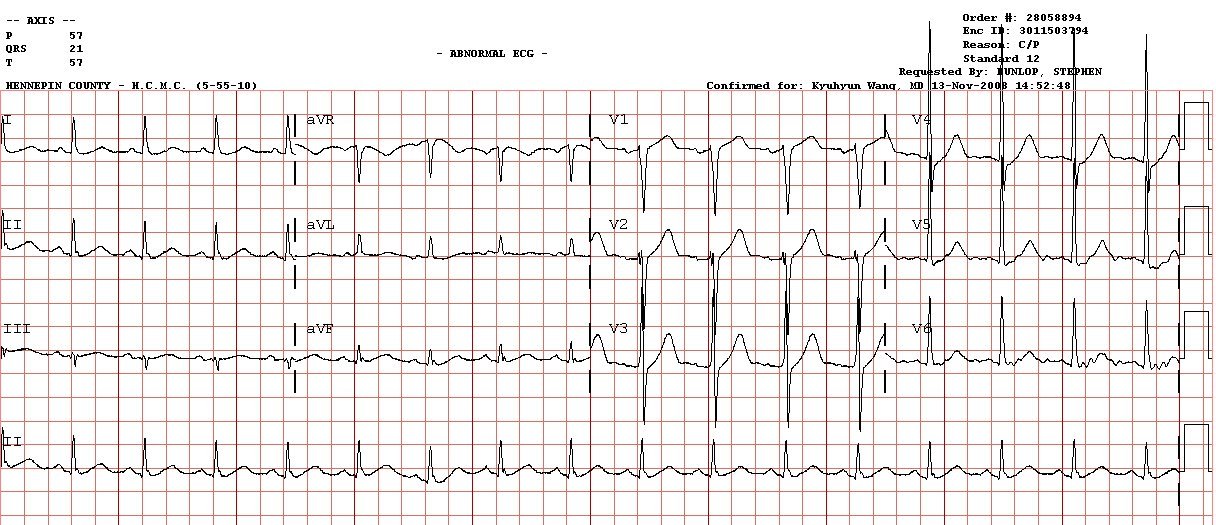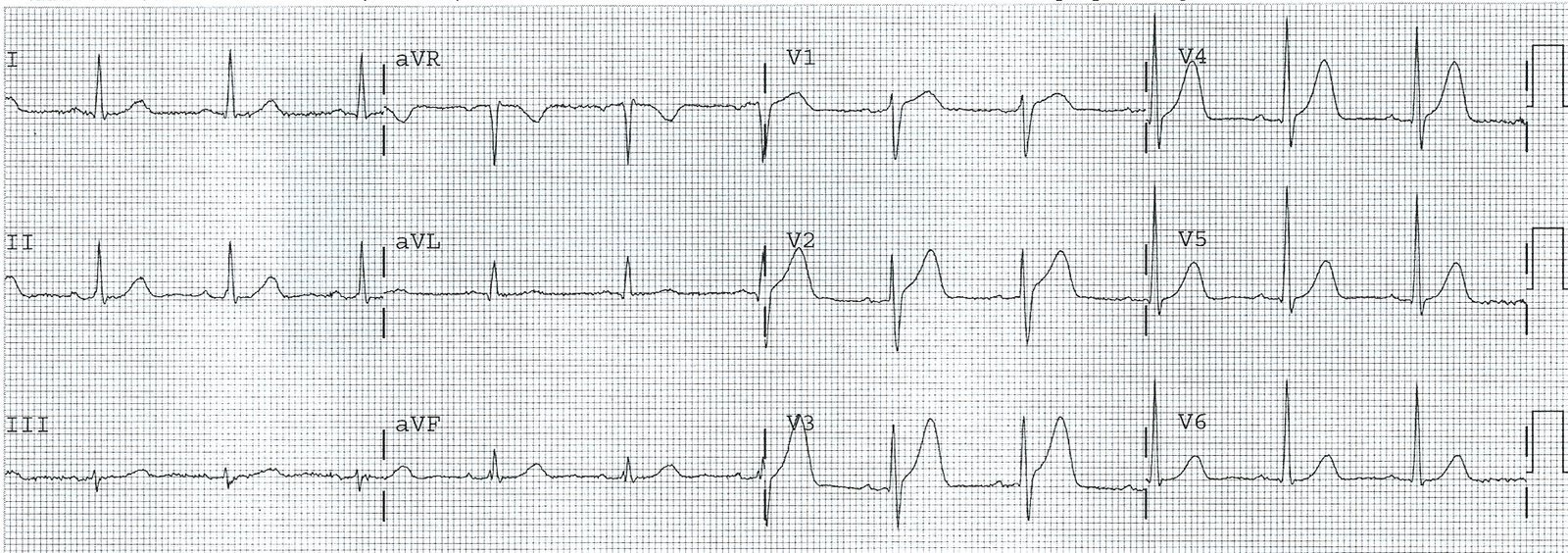ST elevation MI in the setting of a paced rhythm from hqmeded.com on Vimeo.
Two cases of ST depression
NSTEMI with subtle ST depression. EKG from 11-12. Symptoms on 11-12 were also subtle, but present for 5 days, so if a single troponin was…




Thanks a lot! This is highly interesting and also very much educating. Usually when I see an ECG with a paced rhythm, I tend to disregard it for further analysis. I´m used to thinking that with paced rhythms, the ecg isn´t really helpful for diagnosing infarction or arrhythmias. But this post here really made me aware of details that I will try not to overlook from now on..
Thanks for the blog and your views. Great to read them. Keep it up.
Thanks a lot. Thanks for remembering that an isoelectric ST could be equivalent to ST elevation.
Sorry to resurrect this post from 2008, but I have a beginner's question. How can you tell the baseline EKG is paced? I do not see any pacemaker spikes. Am I missing something?
Look in V3-V6. Pacer spikes easily seen. Frequently they are not easily seen because new pacers can have bipolar leads that produce very little voltage. However, the computer is good at seeing these and will almost always indicate paced rhythm.
Thank you. I did not realize that they may not be visible in all leads.